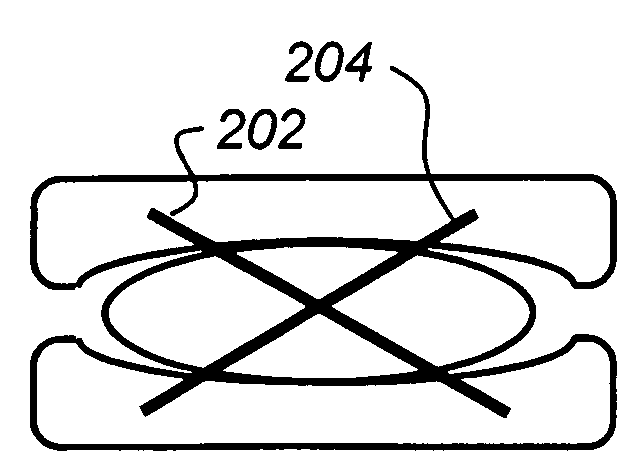Check reins for artificial disc replacements
a technology of artificial discs and reins, which is applied in the field of check reins for artificial disc replacements, can solve the problems of spinal cord injury, spinal cord injury, and increased probability of spinal cord injury with excessive force in the posterior direction, and achieve the effect of restoring motion limiting functions and preventing excessive spinal motion
- Summary
- Abstract
- Description
- Claims
- Application Information
AI Technical Summary
Benefits of technology
Problems solved by technology
Method used
Image
Examples
Embodiment Construction
[0014]The invention is broadly directed to check reins in the form of elongated members used to limit the extreme range of motion which would otherwise be permitted by some ADR designs. The check reins serve two main purposes. First, they retain disc spacers, if present. Additionally, the wedge shape of ADRs and the removal of the Anterior Longitudinal Ligament (ALL) and a portion of the Annulus Fibrosus (AF) to insert the ADR from an anterior approach, favor anterior extrusion of disc spacers. In preferred embodiments the check reins are therefore limited to the anterior portion of the periphery of the ADR.
[0015]Second, check reins serve to prevent excessive spinal motion. Again, although they may be helpful in other locations, anterior check reins help restore the motion limiting functions of the ALL and AF that were removed in anterior approaches to the spine. As illustrated in FIG. 2, check reins may helpful in the anterior and posterior portions of ADRs. Check reins may also be...
PUM
 Login to View More
Login to View More Abstract
Description
Claims
Application Information
 Login to View More
Login to View More - R&D
- Intellectual Property
- Life Sciences
- Materials
- Tech Scout
- Unparalleled Data Quality
- Higher Quality Content
- 60% Fewer Hallucinations
Browse by: Latest US Patents, China's latest patents, Technical Efficacy Thesaurus, Application Domain, Technology Topic, Popular Technical Reports.
© 2025 PatSnap. All rights reserved.Legal|Privacy policy|Modern Slavery Act Transparency Statement|Sitemap|About US| Contact US: help@patsnap.com


